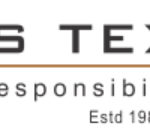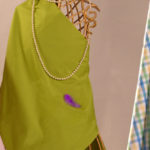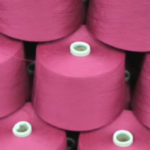New Product Label – Tested Quality ‘Skin Flora Neutral’
Hohenstein Researchers Develop Test System for Documenting the Safety of Antibacterial Functionalised Textiles
Bönnigheim (Germany) : Antibacterial textiles, e.g. products treated with silver, have an odour eliminating effect and are therefore very popular particularly for so-called first layer or sports clothing which is worn directly against the skin. In recent years, however, antim-icrobial functionalised textiles have repeatedly been the subject of critical reports in the media, creating unease among customers.
A recent test of cycling trousers carried out by the German consumer advice magazine Öko-Test (4/2013) also gave lower ratings to tex-tiles containing silver. Critics are propagating the idea that the antimicrobial effect could affect the healthy human skin flora if it is too ‘strong’. This supposedly becomes a problem especially when antibacterial fibres are used in clothing that is worn close to the skin, such as underwear or socks. There is one aspect that is usually overlooked in this criticism, though: The effective bioavailability of the active silver substances in the product. Re-searchers from the Hohenstein Institute in Bönnigheim/Germany have already refuted the fears about commercial quality antibacterial products in an extensive scientific field study several years ago (AiF no. 15537 N).
A comparison between the influence of normal and antibacterial functionalised chemical fibres on the skin flora and the micro climate showed no significant differences. The research results prove that antibacterial agents in high-quality textile finishes are incorporated into the product to work in the microscopical range on the surface of the fibre, preventing the formation of odour on the product. Most of the silver ions in garments worn against the skin are simply not bioavailable and can therefore not have any effect there. They can also not be increasingly released through sweating or washing. The researchers were able to give the basic all clear for the products examined. However, they also suggested studying the effects of these functionalised textiles on the skin flora in the context of consumer protection.
Not all products can be examined in field studies over weeks or months before introduction to the market and there was no quick test available so far.

Artificial skin model with human skin flora for risk assessment of antibacte-rial functionalised textiles (HUMskin) © Hohenstein Institute
The Hohenstein researchers have now tackled this problem. A new test system allows tex-tile manufacturers to have the effects of antibacterial finishes on the skin flora examined already during product development. The practicability and reliability of the results pro-duced by the test system have already been proven through examination and comparison of functional textiles with antibacterial finish.

The new Hohenstein Quality Label indicates that an antibacterial product is safe for the human skin flora. © Hohenstein Institute
The practically oriented test is based on a standardised model of the human skin flora which simulates the germ population, topography and environmental properties of healthy skin. To achieve this, several germ types were selected from the micro flora of a human epidermis and applied to a specially developed artificial skin replacement material (HUM-skin). The effect of the test material on these germs is quantified during a wearing simula-tion over a period of 18 hours and then evaluated against a control material without antim-icrobial finish. This process examines the change in the total number of germs as well as the number of individual germs. If no significant reduction in the number of germs occurs within the exposure time, the textile is considered to be ‘safe’ with regard to the body’s own skin flora.
The test results can be advertised using the Hohenstein Quality Label ‘Antibacterial & Skin flora neutral’. Successful testing for antibacterial effectiveness according to DIN EN ISO 20743 is a prerequisite for obtaining the label. To ensure realistic testing, the test system was correlated with textiles from an earlier field study concerning the influence of antibac-terial clothing (AiF no. 15537 N).
The aim of the Hohenstein Quality Label ‘Skin flora neutral’ is to allow customers to see which antibacterial textiles have been proven to have no influence on the skin flora. In addi-tion to the current tests ‘Antibacterial’, ‘Odour reduction’, ‘Effective against dust mites’, ‘Skin friendly’ and ‘Suitable for allergy sufferers’, the Hohenstein Institute can now offer another certification for textile manufacturers which is directed at retail customers.
Prof. Dr. Dirk Höfer explains, ‘The new product label ‘Skin flora neutral’ is the ideal supple-ment to the Hohenstein Quality Label we introduced a few years ago.’ The newly developed test system can also be used to examine the impact of antibacterial cosmetics and deter-gents.
Skin flora
With a surface of around two square meters, the skin is the largest organ in our bodies. It is densely populated by microorganisms such as staphylococci, micrococci, propionibacteria and corynebacteria. These make up the so-called resident skin flora which plays an important role in the skin’s barrier function and protects us against outside influences and pathogens.
Contact Details :
Hohenstein India Pvt. Ltd.
(Ahmedabad Office)
604-B, Regency Plaza, Above Gloria Restaurant, Near Madhur Hall
Anand Nagar Cross Roads,
100 Feet Road, Satellite
Ahmedabad – 380015
Tel. : +91 79 4037 3090
Mobile : +91 98 9847 5339
Fax : +91 79 2693 3220
Email : [email protected]






